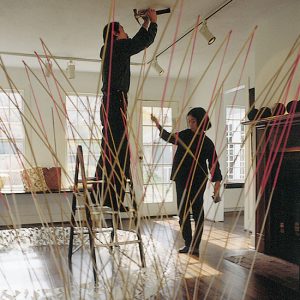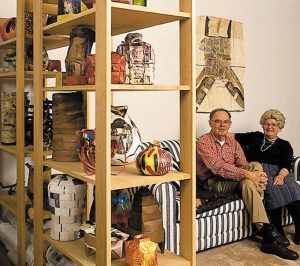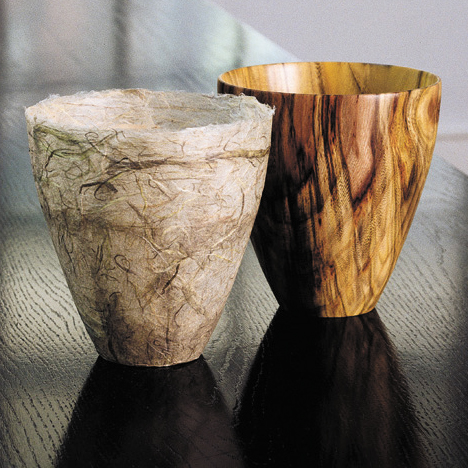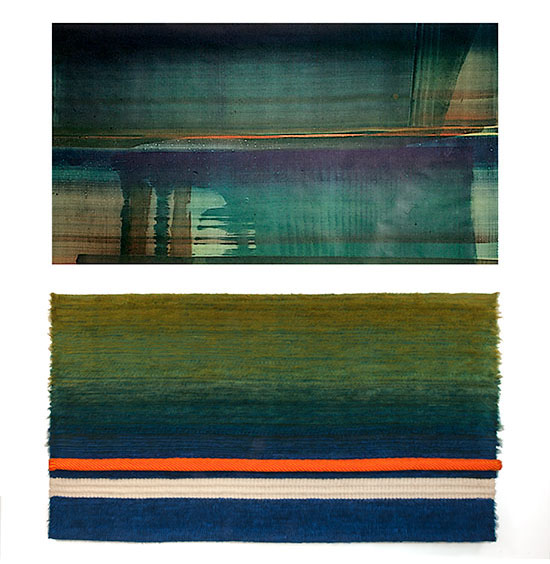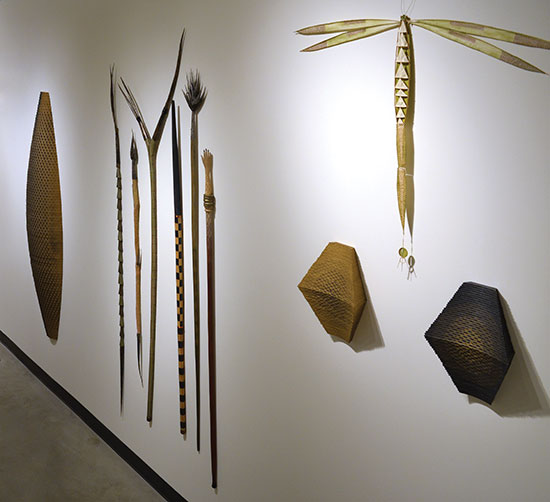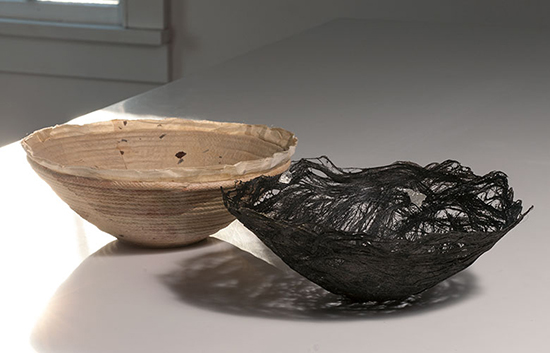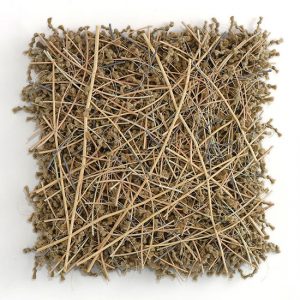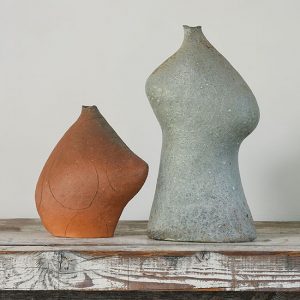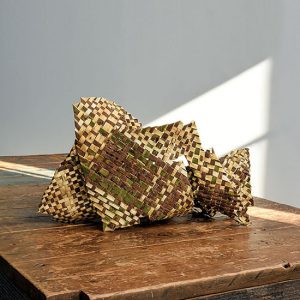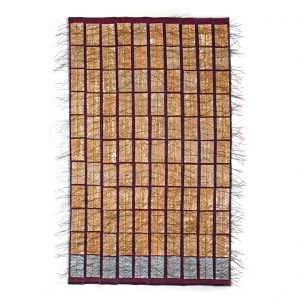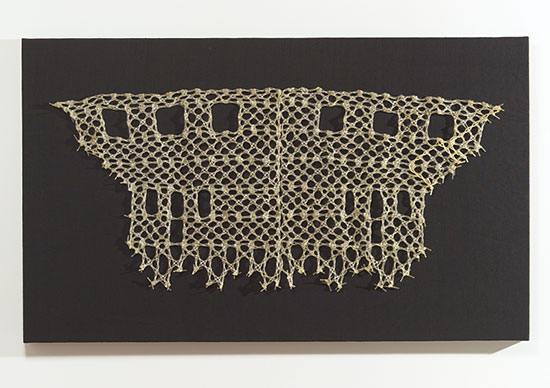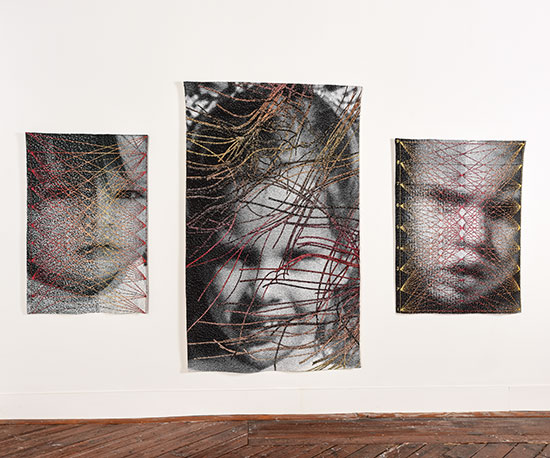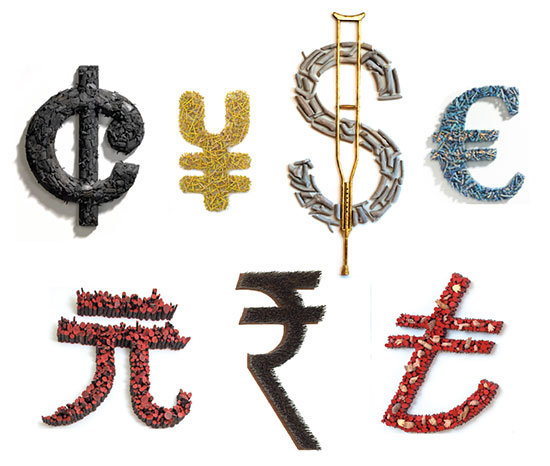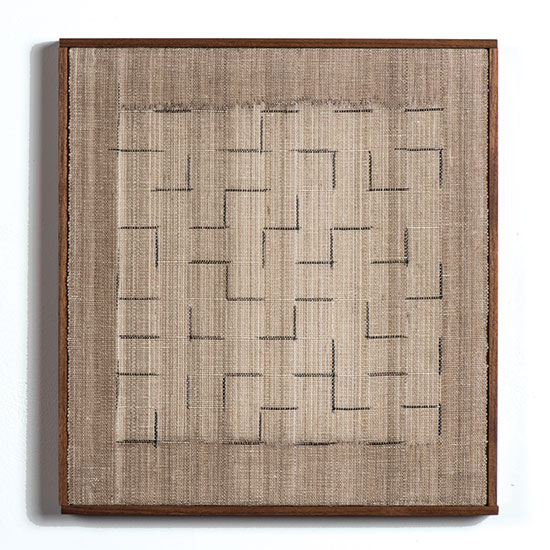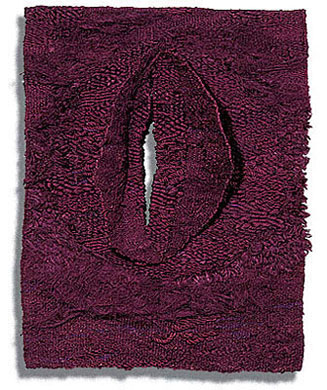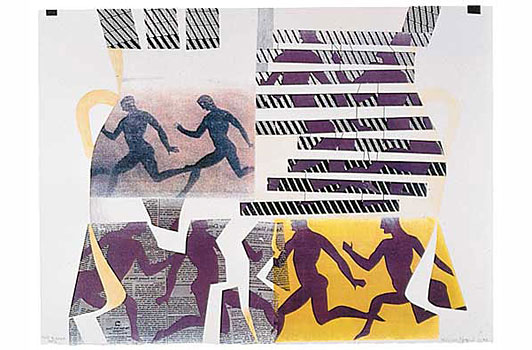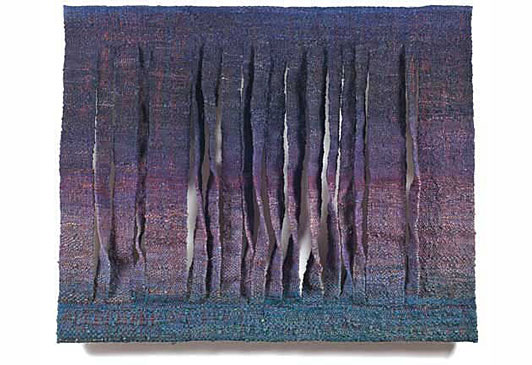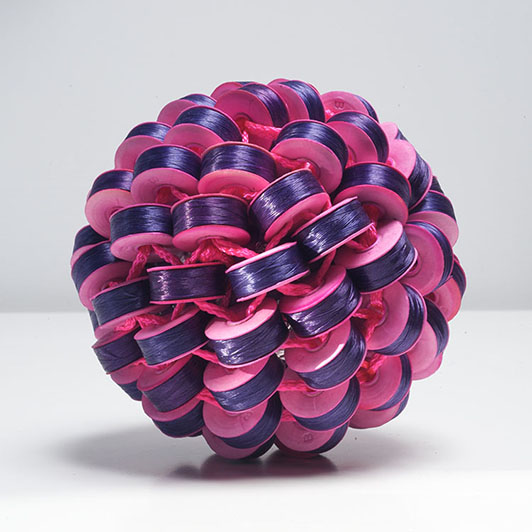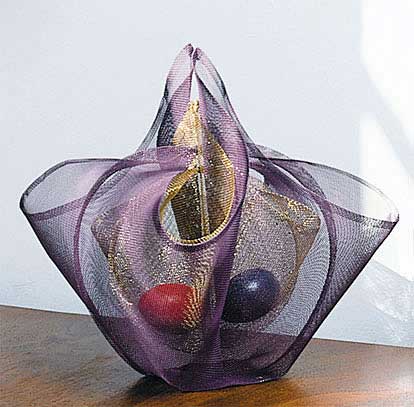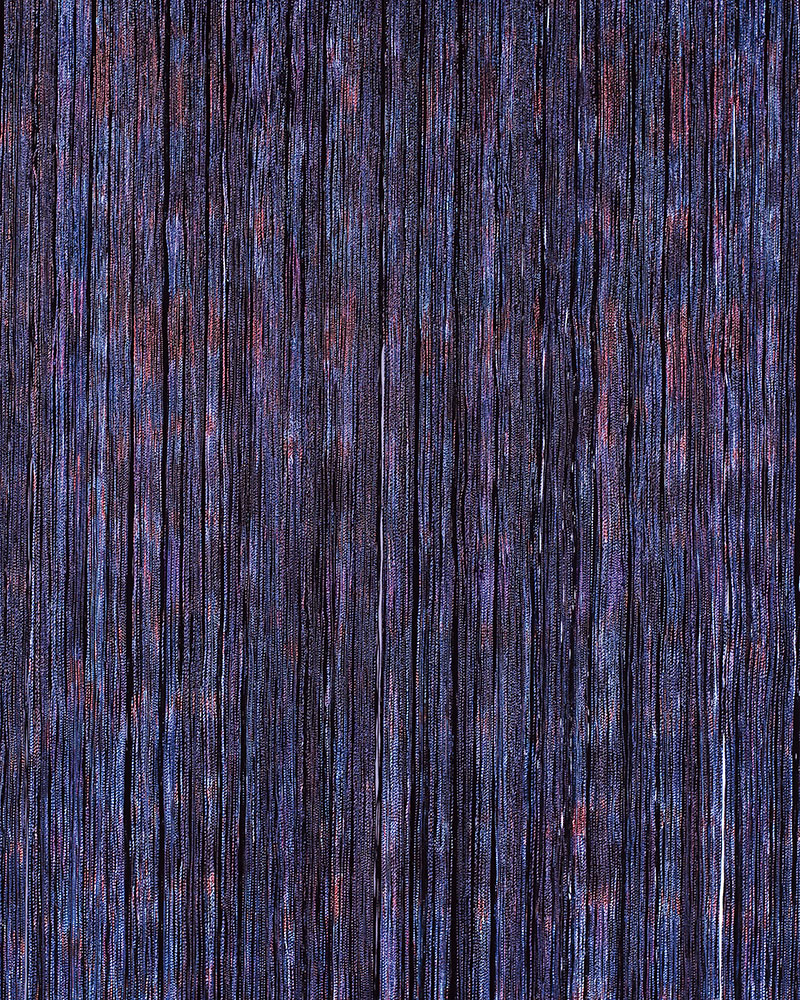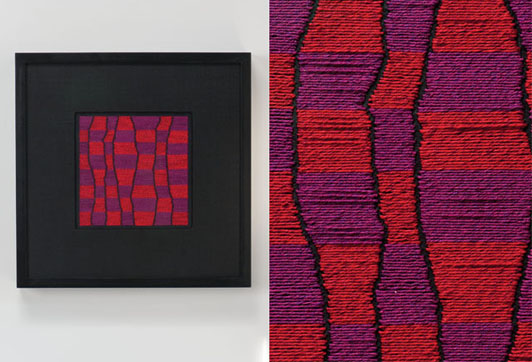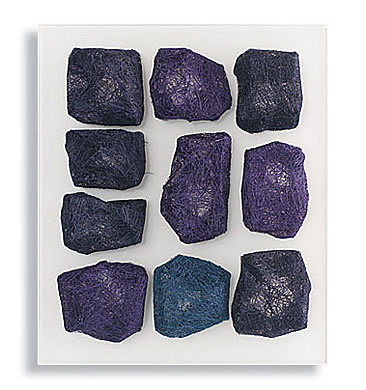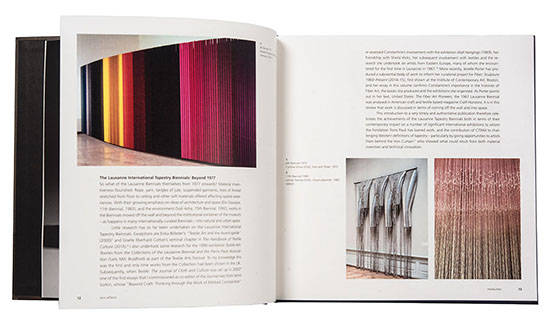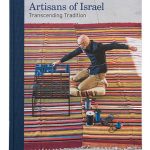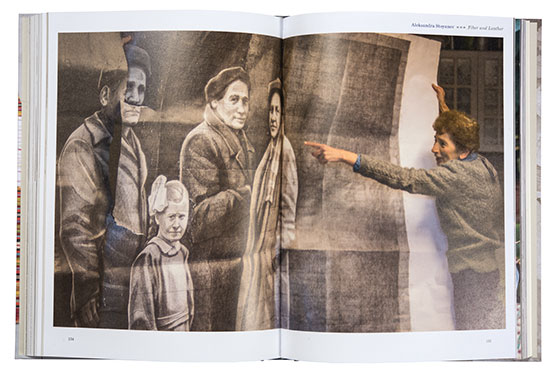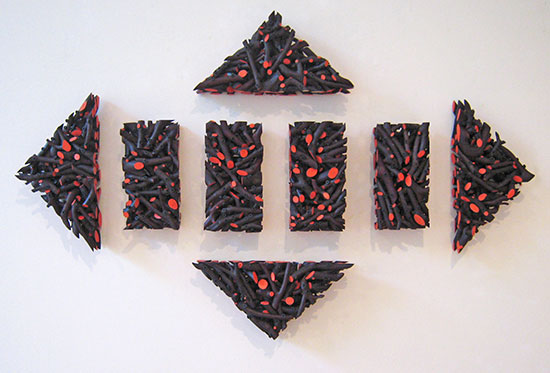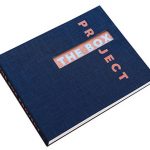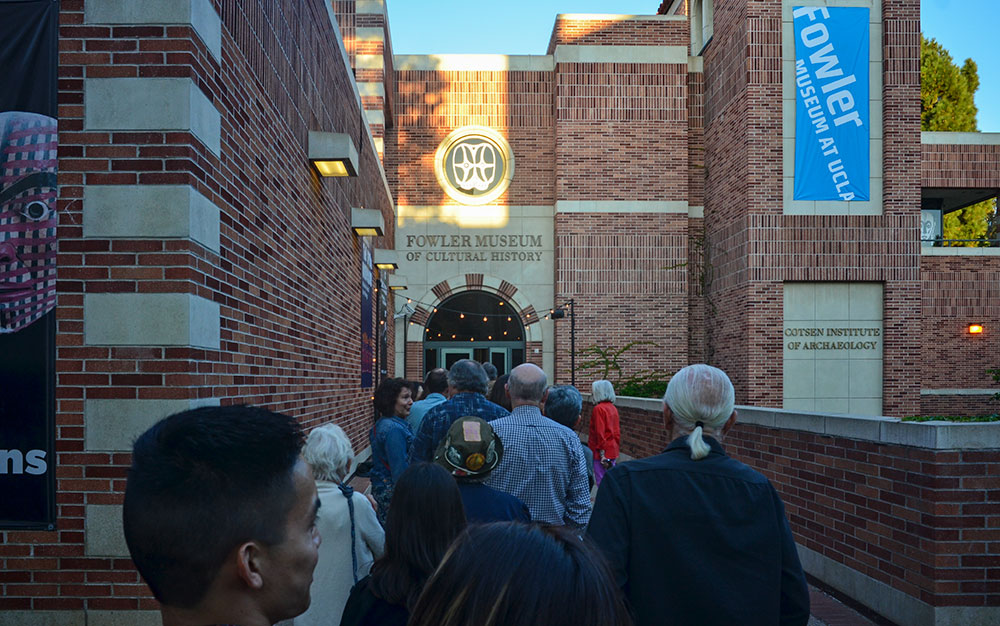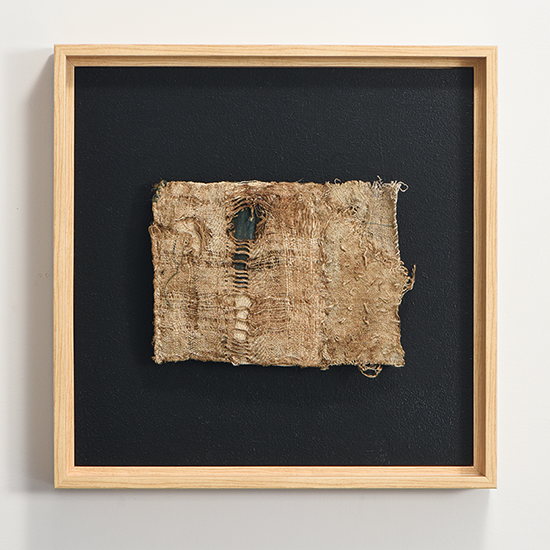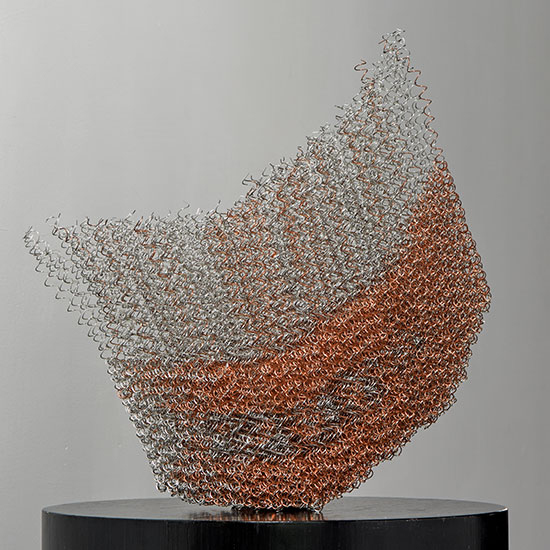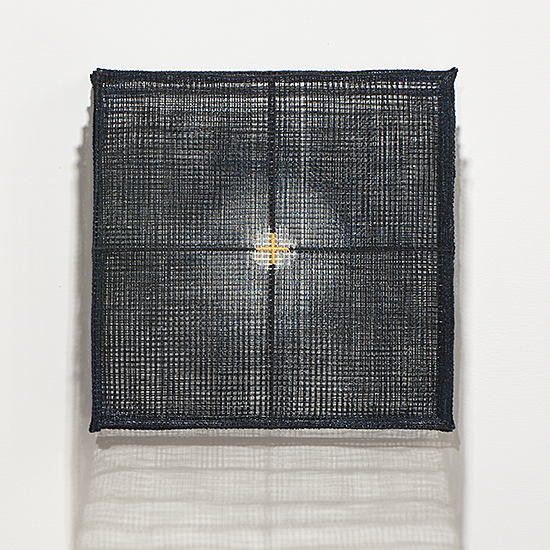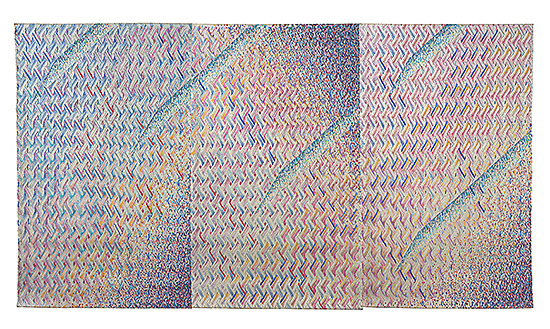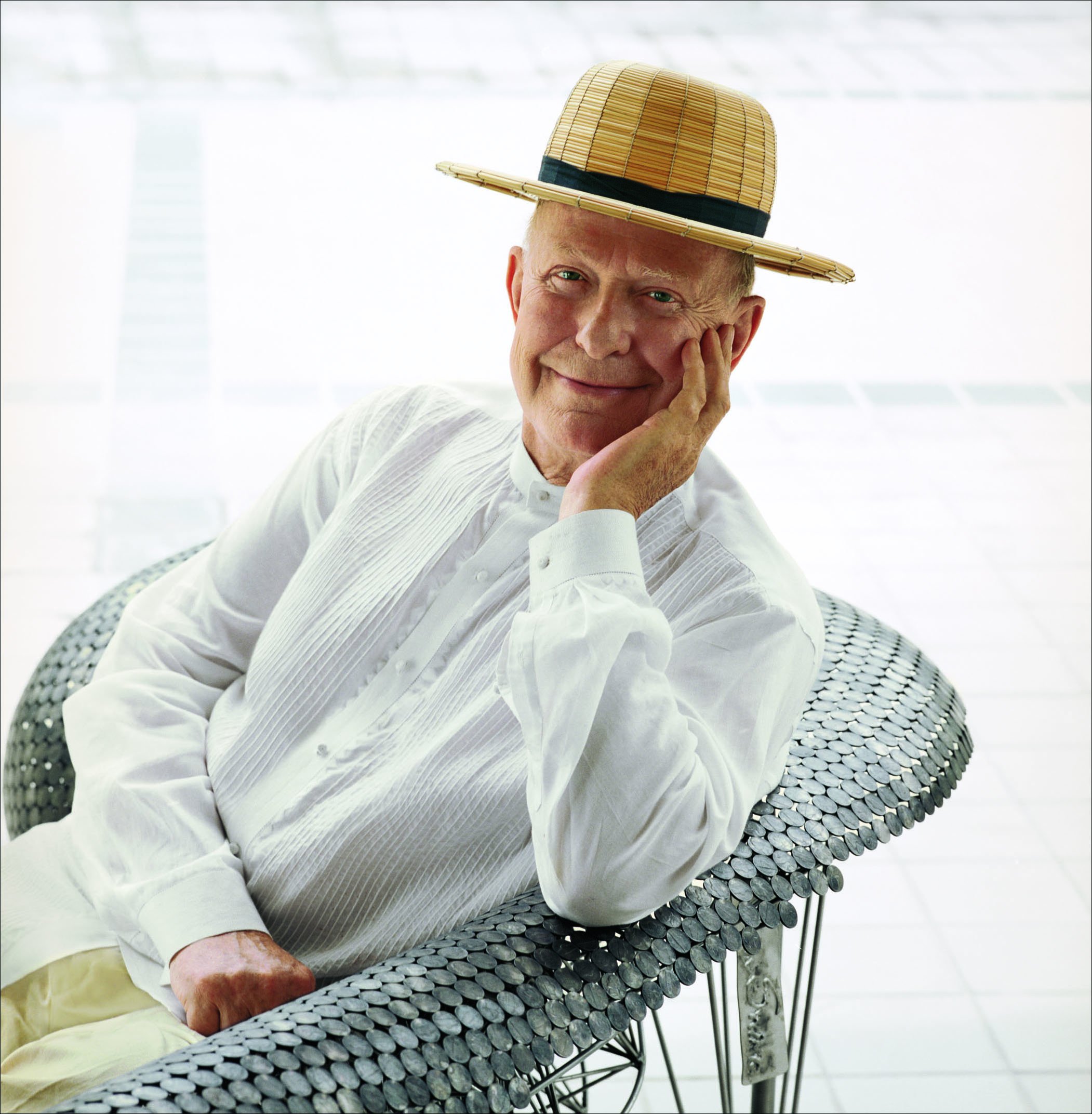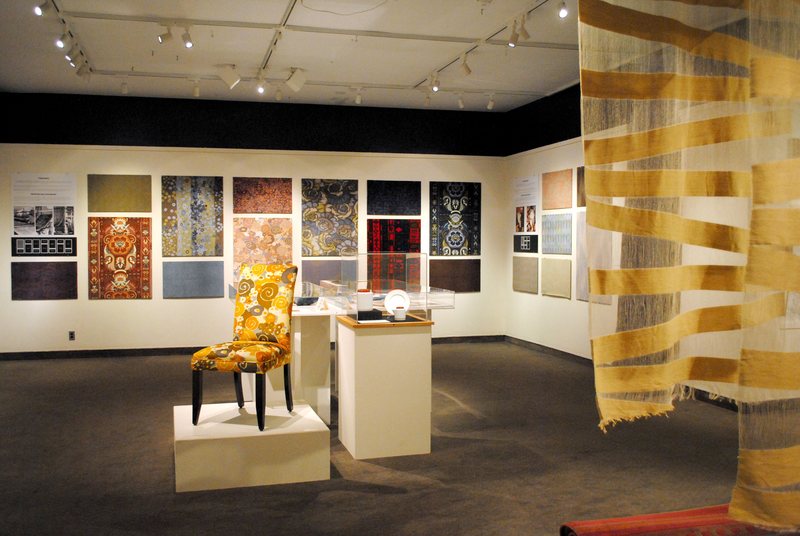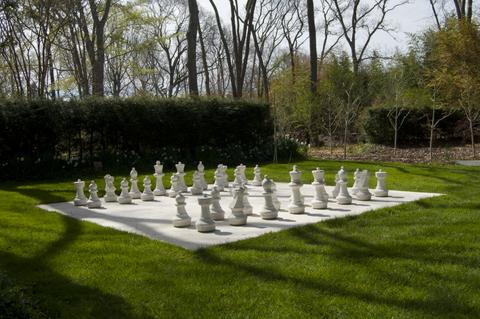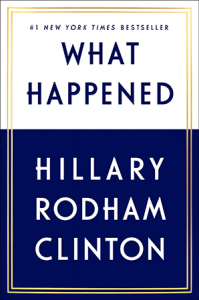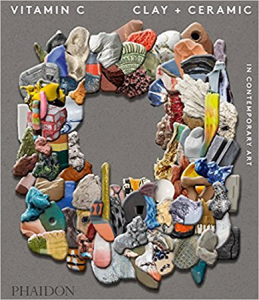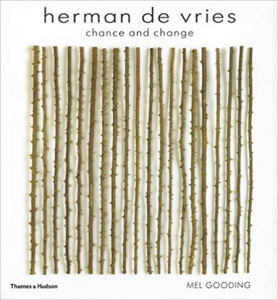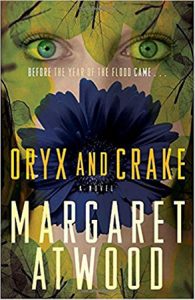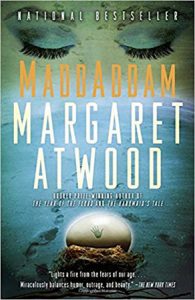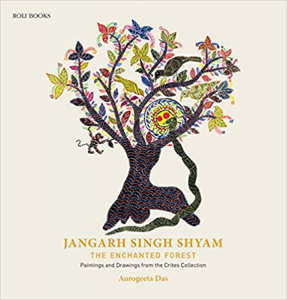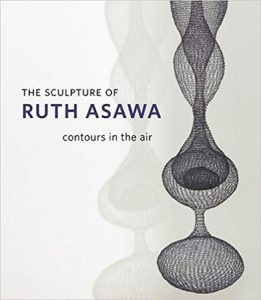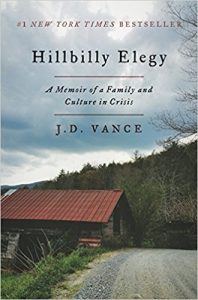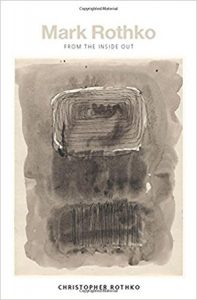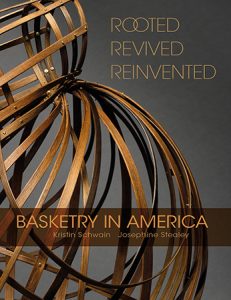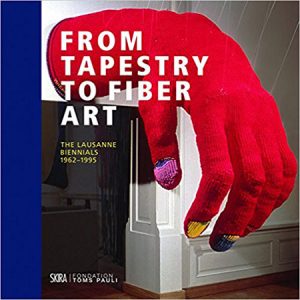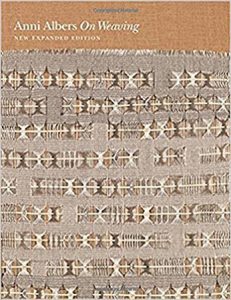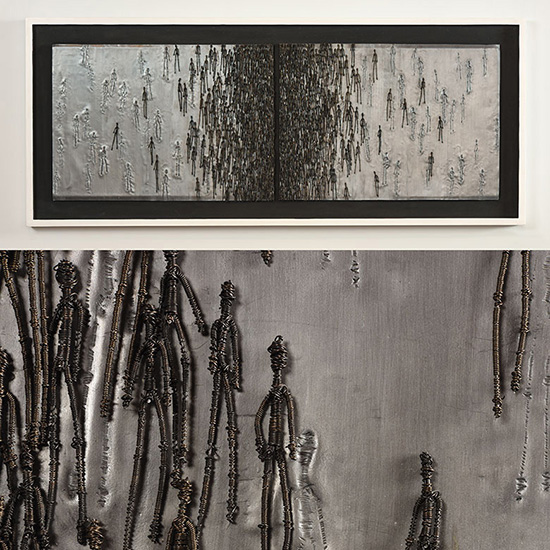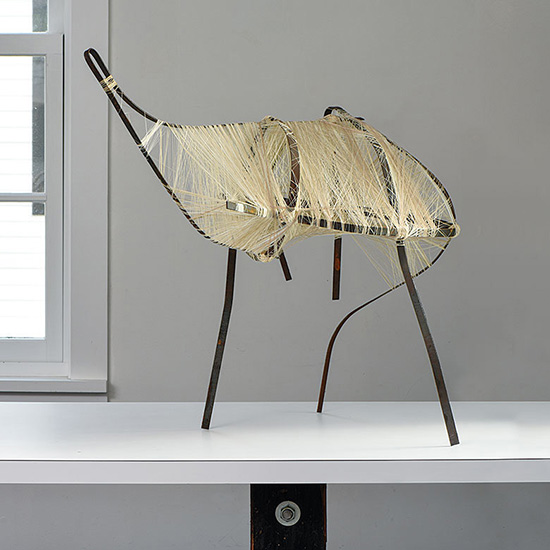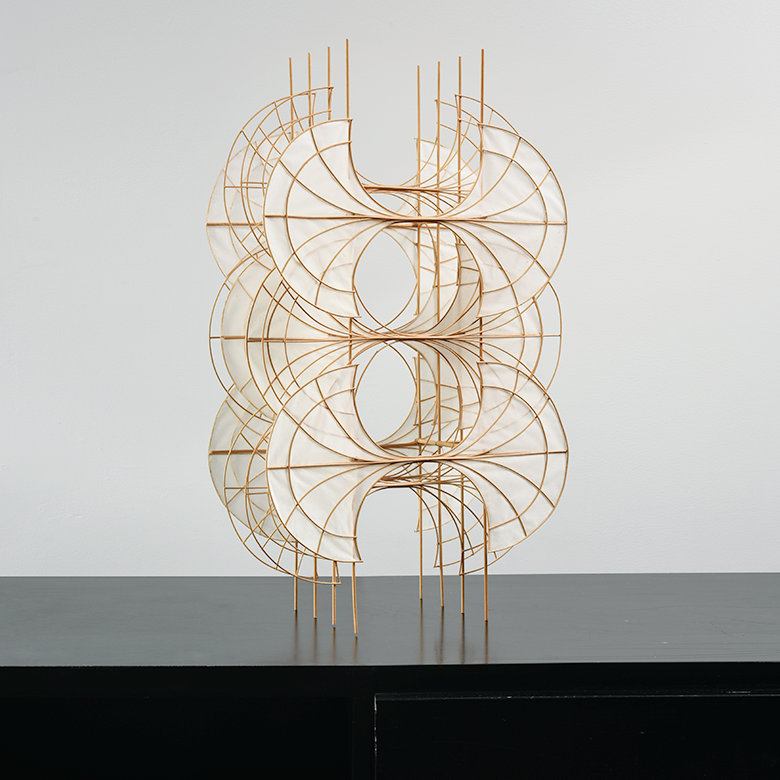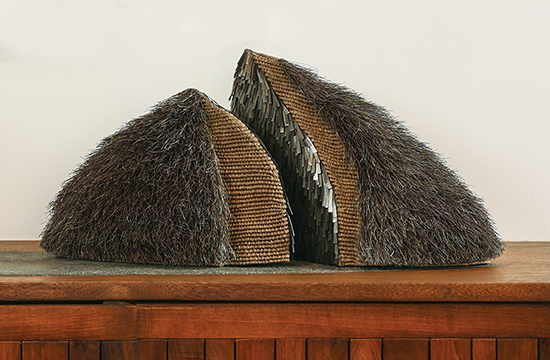Ed Rossbach/Katherine Westphal: Ed Rossbach and Katherine Westphal were both innovators — he a maker of nonfunctional art baskets; she in her work with xerography and art quilts. The pair loved to travel and images and influences from those visits appear in their work in various ways. Images from the American West, including bison and feathers, appear in both Rossbach’s baskets and drawings and in Westphal’s wall hangings of tapas bark. Westphal made color photocopies of photos she took on their travels through Europe, Asia and the Middle East, and with a heat transfer process, inserted these images into her quilts and wearable art. Rossbach took photo images and reconstructed them with stitching and pins.
Kay Sekimachi/Bob Stocksdale: Kay Sekimachi and her late husband, woodturner Bob Stocksdale, collaborated to create an entire series of work, exhibited across the US as Marriage in Form. Sekimachi used his turned wood vessels as a form to shape her own ber vessels from hornet’s nest paper. Sekimachi applies a base layer of Kozo paper to a wood form, then laminates the hornet’s nest paper. The resulting objects appears delicate and ethereal but is actually stiff and stable.
Claude Vermette/Mariette Rousseau-Vermette: For several decades, this couple worked in separate studios, in different media, in different ways. Yet, as the Museum of Contemporary Art in Baie St. Paul, Quebec noted when mounting a posthumous retrospective of Vermette’s paintings, ceramics and sculpture and Rousseau-Vermette’s tapestries, they shared “a common spirit, strong affinities and correspondences, links of course emotional and intellectual, the same historical and sociological context and the crossing of an important period of time.”

